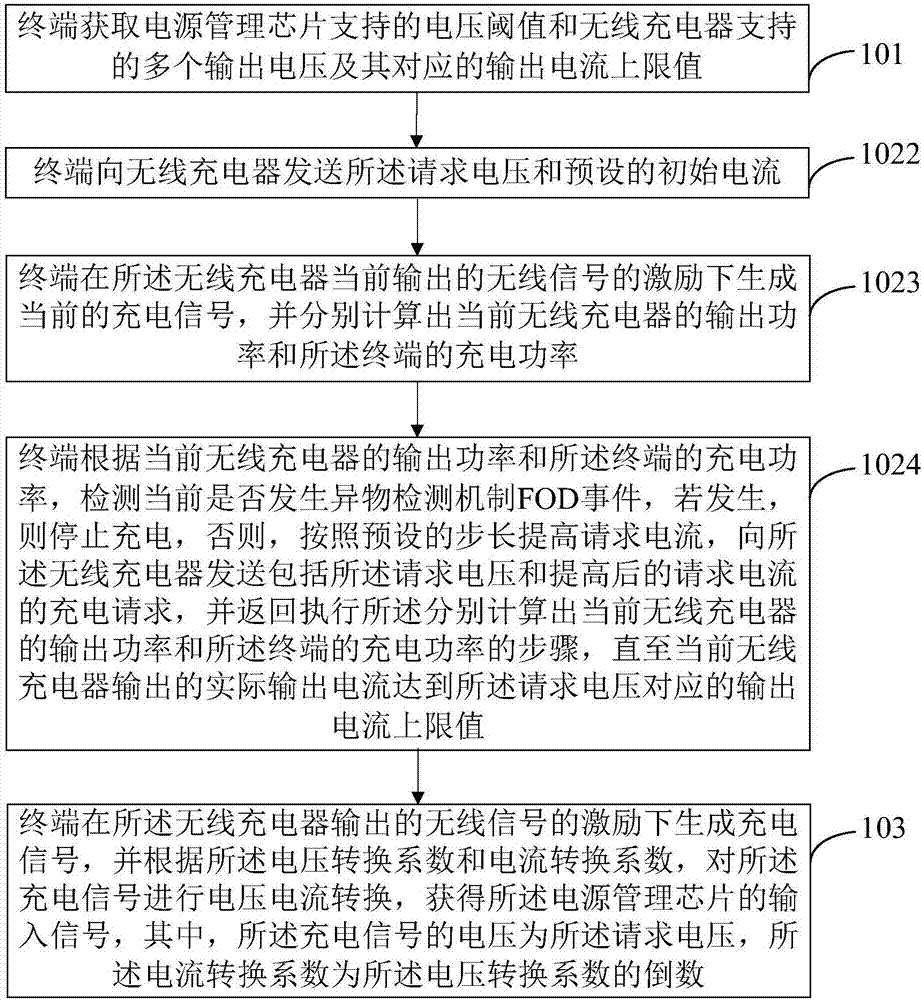Wireless charging method and the terminal
A wireless charging and wireless charger technology, applied in the field of communications, can solve the problems of input voltage limitation, limitation, and inability to effectively realize power, and achieve the effect of reducing charging time and improving charging efficiency
- Summary
- Abstract
- Description
- Claims
- Application Information
AI Technical Summary
Problems solved by technology
Method used
Image
Examples
Embodiment Construction
[0019] Reference will now be made in detail to the exemplary embodiments, examples of which are illustrated in the accompanying drawings. When the following description refers to the accompanying drawings, the same numerals in different drawings refer to the same or similar elements unless otherwise indicated. The implementations described in the following exemplary examples do not represent all implementations consistent with the present disclosure. Rather, they are merely examples of terminals and methods consistent with aspects of the present disclosure as recited in the appended claims.
[0020] Figure 1A It is a flow chart of a wireless charging method shown according to an exemplary embodiment, as shown in Figure 1A As shown, this embodiment is illustrated by taking the wireless charging method applied to a terminal as an example. The wireless charging method may include the following steps:
[0021] In step 101, the terminal obtains the voltage threshold supported ...
PUM
 Login to View More
Login to View More Abstract
Description
Claims
Application Information
 Login to View More
Login to View More - R&D
- Intellectual Property
- Life Sciences
- Materials
- Tech Scout
- Unparalleled Data Quality
- Higher Quality Content
- 60% Fewer Hallucinations
Browse by: Latest US Patents, China's latest patents, Technical Efficacy Thesaurus, Application Domain, Technology Topic, Popular Technical Reports.
© 2025 PatSnap. All rights reserved.Legal|Privacy policy|Modern Slavery Act Transparency Statement|Sitemap|About US| Contact US: help@patsnap.com



